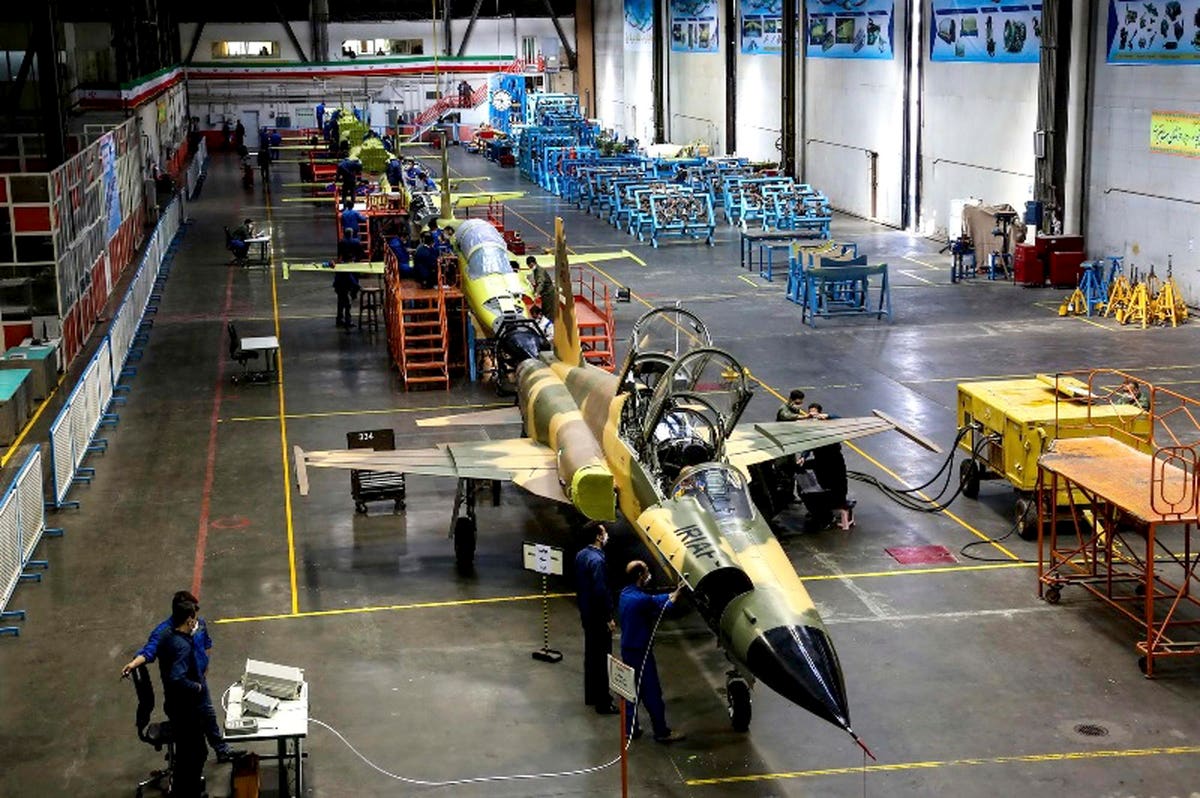Iran is once again boasting about its capability to domestically develop and build fighter jets amid increasing signs Russia is reneging on a sale of Su-35 Flanker fighter jets Tehran was counting on using as a stopgap solution for its air force’s aged fighter fleet.
“At some point, we made a deal for the purchase (of Su-35s), but we came to the conclusion that we have the ability to produce (fighter jets) in the country,” said Iranian Defense Minister Mohammad-Reza Gharaei Ashtiani on July 19.
His comments seemingly reinforce recent reportage that Russia isn’t delivering up to 50 Su-35s Iran paid for before the current war in Ukraine began in February 2022. They can also be interpreted as Ashtiani’s exaggerating Iran’s capabilities to design and build indigenous combat aircraft to divert attention away from Tehran’s undoubted embarrassment over Moscow’s failure to uphold its end of the Flanker deal.
Iran needed the Su-35, the closest aircraft Moscow has to an advanced 4.5-generation fighter, to upgrade its aged air force. Iran hasn’t bought any fourth-generation fighters since acquiring Soviet MiG-29 Fulcrums in the early 1990s. Tehran’s only other fourth-generation jets are its fleet of American F-14A Tomcats received in the 1970s before the revolution. Iran is the sole remaining operator of the venerable Tomcat.
On July 23, Iran began an air force drill called Fadaeian Velyat-11 (Devotees of the Supreme Leader-11), which coincided with a U.S. military buildup in the Persian Gulf region in response to Iran’s targeting and harassment of merchant shipping. Eleven airbases are participating in the drill with 90 fighters and drones.
As with similar exercises of its kind, the drill will once again exhibit Iran’s aged fighter fleet, which has suffered a noticeable uptick in fatal crashes in recent years. For example, on the night the exercise began, Iranian state media released footage showing Soviet-built Su-24 Fencer bombers and Vietnam War-era American F-4 Phantom II fighter bombers destroying ground targets.
While the Su-35 lacks critical features found on other 4.5-generation fighters, most notably an active electronically scanned array (AESA) radar, Ashtiani’s suggestion that Iran could build comparable aircraft independently is highly questionable.
Putting aside the farcical Qaher-313 stealth fighter mockup Tehran unveiled a decade ago, Iran has not excelled at producing anything more advanced than derivatives of the American Northrop F-5 light fighter aircraft, a design that dates all the way back to the late 1950s.
Iran Aircraft Manufacturing Industrial Company (HESA) has been building F-5 variants since the late 1990s, starting with the Azarakhsh and followed by the Saeqeh a decade later.
In 2015, Iran introduced a two-seat variant of the latter aircraft. That same year, a senior air force commander claimed Iran would “manufacture an aircraft on Saeqeh platform which will be equipped with fourth-generation (and even higher) avionics.”
In March, Iran began production of its indigenous HESA Yasin training aircraft, which is also capable of close air support missions. Tehran unveiled the HESA Kowsar in 2018, which looks identical to the F-5F, claiming its indigenous upgrades qualify dubbing it a fourth-generation fighter.
Iranian media has described the aircraft using terms such as “fourth-generation all-indigenous interceptor jet.”
While these aircraft undoubtedly have significant improvements and upgrades over the F-5s Iran imported half a century ago, they are no substitutes for its F-14s and MiG-29s nor newer 4.5-generation aircraft, including the Su-35 despite its limitations. And they certainly stand little to no chance of holding their own against fifth-generation fighters.
Ashtiani wasn’t technically incorrect when he asserted Iran can produce fighters. What he failed to mention was that Tehran has to date proven incapable of building a fully indigenous fourth-generation or 4.5-generation fighter — which its air force badly needs to avoid falling into complete obsolescence in the not too distant future.
Read the full article here





